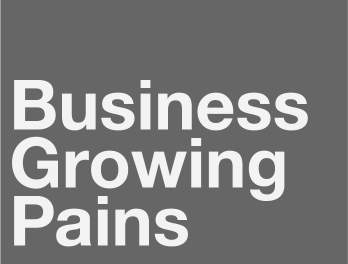
Andrew Brabant
Product-Market Fit
Business growing pains can come in many different guises. I would say to any business owner that is experiencing a slowness in business growth, or really wants to propel their growth, then listening to your customers is the answer. Product market fit means knowing your customers and what their needs / pain points are better than they do.
This definition was applied by venture capitalists when betting on the viability of a company and its single launch product or idea.
Of late, there has been significant disruption of business and business landscapes forcing businesses to pivot, review their target customer and reinvent their channel to market and sometimes reinvent their product or business as a whole.
I now use this process to design a new marketing campaign and review one that is not working. In general, if I can understand those elements about the business or product. then I can build a targeted campaign for most products or businesses. The exception to this is when a customer comes to me with an ill conceived product or a misconception of their ideal customer. (They have no product market fit)
Andy Rachleff current CEO and co-founder of Wealtfront and Benchmark Capital created and named the principle of product/market fit (PMF). His concept PMF was based on his study of the innovative venture capitalist and Sequoia founder Don Valentine’s investment style.
Why does the market matter the most?
In simple terms, we are ensuring the success of the business before we start to market it, by identifying what makes it a desirable product in the world of many choices to the target audience.
I commonly find that if a business is struggling or a campaign is struggling, not getting their product market fit can be one of the biggest obstacles and business growing pains and through analysis and some great ground work, can be one of the biggest contributors to easing one of the biggest pains to growing your business.
According to Marc Andreesen:
“Do whatever is required to get to product-market fit.”
Rachleff developed and teaches a Stanford course, Aligning Start-ups with their Markets. Rachleff states that “you need to identify and test your hypothesis of value first.” And then you only move on to your growth hypothesis until confirmed. The idea determines what, who, and how. What are you going to create, who’s going to be desperate for it, and what business model would you use to produce it?’


How To Achieve Product-Market Fit:
By buying or pre-ordering your product, using it regularly, spreading word-of-mouth, and so on, consumers show their gratitude in acts, not just statements.
As an entrepreneur, PMF is the single most significant thing you need to prove if you are going to quell those business growing pains around marketing ROI and product development. If you don’t have it, your business will fail, If you don’t do it in time, the company will run out of cash and collapse.
Many new entrepreneurs believe that clients would come if they create a product. It doesn’t work like that. Communication and empathy are necessary. You need to know your clients well, speak their language and concentrate on what they care about. You need to set the product in a way that is important to them.
Below is the PMF matrix that I use in my Work Life Mentor courses. It helps to bring the picture of the business into focus by identifying who is buying, why they are buying, where you find them and how you monetise your brand.

1. Determine your ideal customer:
To define your ideal client, create a profile / persona or “Persona archetypes” is a great way to define the attributes and characteristics of different target users, to specify your target customer so that everyone in the product team understands for whom the product is designed and built. Start with your ideal customer’s elevated hypothesis and continually revise it as you learn, analyse, and modify your product’s features to enhance it, with a process known as iterating.
2: Involve the entire team:
On this, Ryan Holiday has a great comment:
“Product Market Fit is not some mythical position that occurs by accident. Companies work for it; they crawl toward it. They are prepared to throw out weeks or months of work because the proof holds up that decision. The services as their clients know them now are fundamentally different from what they were at launch before they had Product-Market Fit.”

3: Understand the major needs of consumers:
4: Understand what you’re offering as a value proposition:
Be sure to include innovative features, fresh new ideas, and items that can excite consumers as you roadmap your production processes.
Even better if you have a unique selling proposition. Why are you different or better? Cheaper is generally not a sustainable USP!
5: Find Out How You Can Reach them:
When clicks on Facebook and Google were a few cents per click, you could afford to use the scatter gun effect and put ads up everywhere for everyone. Now that clicks are $5 to $25 on Google ads and the average conversion rate is below 5% for ecommerce, you can easily spend more money on ads than you can make in sales.
6: Choosing a marketing Channel where your ideal customer is and one that provides a Return on Investment
- Middle East and North Africa – $2.50
- North America – $10.00
- Western Europe – $ 4.00
The same audience of engineers and industry specialists and due to the competition for ad space with these groups, the cost of conversion is massively different. In this case, low lead conversion cost was not an indication of a customer who would use the freemium product and then upgrade to the paid collaboration version.
We measured the conversion rate of these customers through the Unbounce landing pages that were tuned for message match and the average conversions looked like this:
- Middle East and North Africa – 4%
- North America – 18%
- Western Europe – 11%
Of these signups to the free version, to date, all of the paid users are located in North America.
Marketing can be tricky and is rapidly changing and what you know about one region doesn’t apply to another.
My recommendation is to interview a few agencies that have a strong track record and find one that looks like they will do a good job and put them on a 3 month probation period to get you leads or sales. If they don’t recommend landing pages and want to send traffic to your website, then they aren’t serious and you might as well burn your cash.

How to evaluate your product-market fit:
“Start-ups occasionally ask me to help them evaluate whether they have achieved product/market fit. It’s easy to answer: if you are asking, you’re not there yet.” —Eric Ries, The Lean Startup.
To manage your success, you must measure your performance. Identify key points of data that will help you monitor performance.
I have built a free questionnaire form that asks the questions that you need to know the answers to. Once you have completed the questionnaire, you will be able to use the data to speak to your ideal customer’s problem that your product or service solves and modify it or your messaging to speak to your ideal customer’s compelling reason to buy.
Avoid complacency:
I don’t think you’ll always have it if you manage to achieve product-market fit. Your clients’ needs will change over time, and to continue satisfying those expectations, you must continually re-evaluate market conditions.
If things were once working and they have stopped, then go back the start and start working out what has changed for your ideal customer.
Conclusion
To report and store client needs and concerns, you can also set up a framework for your product team.

Related Articles
TOP 10 CAUSES OF BUSINESS GROWING PAINS
TOP 10 CAUSES OF BUSINESS GROWING PAINS 1. Lack of Product Market Fit - Product market fit is the relationship between your products and services and your market. It is the gauge the venture capitalists look at a prospective investment to see whether it has identified...
What is Product Market Fit & Why is it so Important?
creating a business strategy for your online business or bricks & mortar business should be similar evaluate plan and engage with experts. They can point out the holes in your strategy allowing you the room to develop it further.
Habit Creation For Business Success
Relying on motivation and passion to build your business is exhausting and unreliable. Building habits around your tasks and work output will ensure you complete what you set out to achieve.
Follow Us
Subscribe For Updates & Offers
Lorem ipsum dolor sit amet, consectetur adipiscing elit. Aenean scelerisque suscipit condimentum. Vestibulum in scelerisque eros. Fusce sed massa vel sem commodo.


